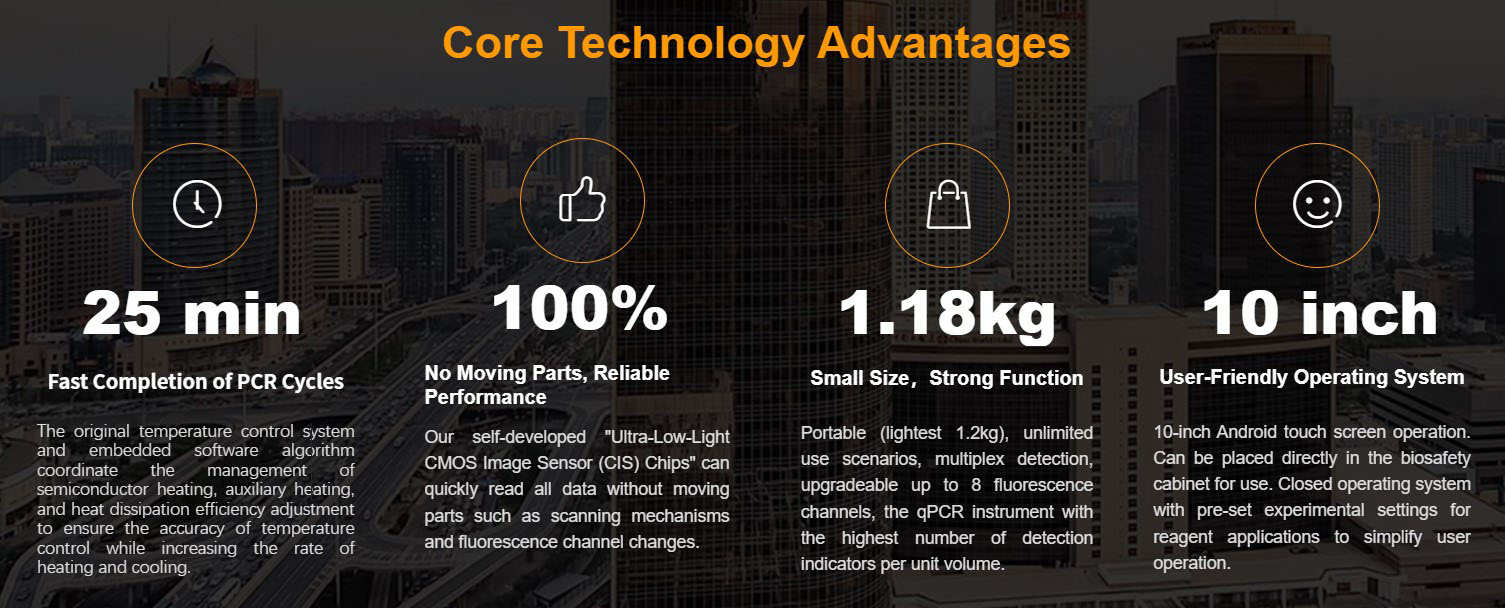Common pet infectious diseases and pet diagnosis methods
Common infectious diseases in dogs and cats
Dermatophytosis in dogs and cats
Canine and feline dermatophytosis, commonly known as "ringworm" or "dermatophytosis", is caused by fungi such as Microsporum canis and Trichoderma reesei, and is a zoonotic skin fungal disease, especially children and women are most vulnerable to infection.
Crepitant mite disease
Peristome mites, also known as hair follicles or sebaceous worms, are mainly parasitic in the hair follicles and sebaceous glands of humans and domestic animals, causing skin diseases, most prevalent in dogs.
Canine distemper
Canine distemper is an acute febrile, contact infection of dogs caused by canine distemper virus (CDV), a member of the genus measles virus, which can infect a wide range of domestic and wild animals. It causes lymphopenia and prolonged immunosuppression and is prone to secondary infections. Clinical signs in affected dogs include fever, catarrhal respiratory signs, gastrointestinal disease, rash, and central nervous system disease.
Canine microviral disease: Canine microviral disease is a virulent infectious disease with high contact transmission caused by canine microvirus (CPV), also known as canine viral enteritis or hemorrhagic enteritis. It is clinically characterized by acute hemorrhagic enteritis and myocarditis.
Feline distemper
Feline distemper is also known as panleukopenia or feline infectious gastroenteritis. It is a common infectious disease with high morbidity and mortality caused by feline panleukopenia virus (FPV), which is typically characterized by leukopenia and hemorrhagic enteritis.
Feline infectious peritonitis
Feline infectious peritonitis (FIP) is a progressive, lethal infectious disease of felines caused by feline infectious peritonitis virus (FIPV), which is characterized by peritonitis, massive accumulation of ascites or granulomatous lesions in various organs, and a high lethality rate as the main clinical features.
Feline cuirass virus infection
Feline culexvirus (FCV) is a highly infectious pathogen. Clinical manifestations of FCV infection include oral ulcers, rhinitis, conjunctivitis, and upper respiratory tract disease.
Classification of pet diagnostics
According to the test method, pet diagnosis can also be divided into biochemical diagnosis, immunodiagnosis, molecular diagnosis, blood diagnosis, etc. The colloidal gold test paper in immunodiagnosis can provide rapid diagnosis, the results are easy to determine, fast and simple, and do not require additional instruments, which has been widely used in veterinary clinics and veterinary hospitals, and is an important aid to diagnosis and treatment, but the sensitivity is poor and cannot be quantified. Molecular diagnostics, represented by PCR technology, has high sensitivity and specificity and is widely used in pet treatment.
As nucleic acid testing technology becomes more widespread, more and more companies are getting involved in pet medicine. Most pet hospitals have also chosen to carry out PCR testing in their own hospitals. This is faster compared to sending it to a third party for testing, avoiding problems such as sample failure and distorted information transmission during delivery, and most importantly, greatly reducing costs and increasing profit margins.
The advantages of Anitoa's PCR instruments in pet diagnosis:
For veterinary hospitals, they can provide a small testing laboratory space and cannot have a standard PCR testing laboratory like human hospitals. And pets owners want to get the test results as soon as possible, so testing time is an area of concern for hospitals. Currently, there are many PCR manufacturers, but most of them mainly do large PCR instruments. Anitoa has focused on the development and manufacture of smaller instruments from the beginning.
Anitoa's rapid PCR instrument uses common PCR consumables and has a temperature heating and cooling rate of >8.0 °C/s. The original temperature control system and embedded software algorithm coordinate the management of semiconductor heating, auxiliary heating, and heat dissipation efficiency adjustment to ensure the accuracy of temperature control while increasing the rate of heating and cooling. The rapid PCR detection reagents can be used to achieve a rapid detection time of 25 min.

Professional Portable qPCR System Manufacturer - Anitoa
Anitoa is a professional R&D and manufacturing company of molecular diagnostic qPCR instruments and reagents, with independent intellectual property rights of core chip technology, optical technology, rapid heating, microfluidic control and supporting reagents and other patented technologies, so that the instruments developed by Anitoa are characterized by quick and easy small instruments, allowing the development of expensive and complex large PCR instruments into truly portable POCT products.